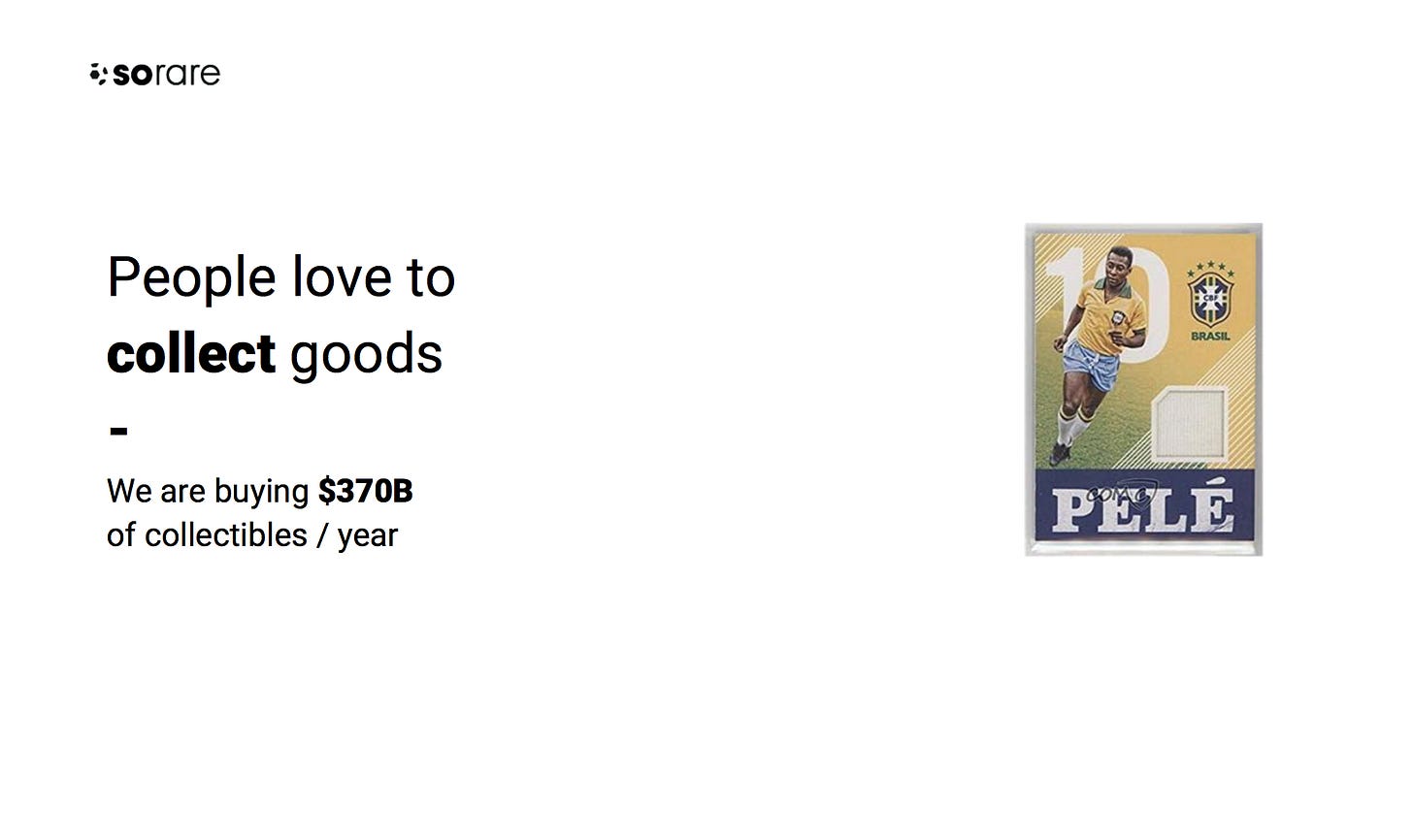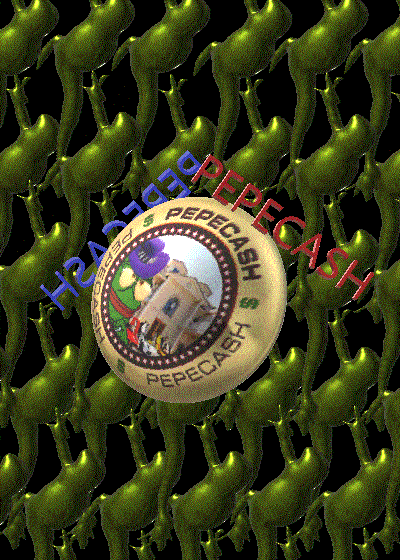Recently, two 1986-87 Fleer Michael Jordan Rookie Cards sold in auction for $738,000:
Obviously, the cards are in very good condition - “graded Gem Mint PSA 10” and hence “virtually perfect cards”. Nevertheless, that is a hefty sum for almost anyone and it is just natural for readers to raise their eyebrows due to such a high amount. Yet, what few people actually know is that behind seemingly single outlier transactions, there is a real industry or even asset class. The list of the priciest card editions include versions that date back to 1909 and some are worth more than $3.3M. Hell, there are even professional services evaluating these kinds of assets, such as Professional Sports Authenticator, Sportscard Guaranty and Beckett Grading Services.
What is interesting though is that a majority of the record sales happened after 2010 and in this sense, the asset class is pretty nascent still. The positive trend, however, continues, as Sports Collectors Daily describes. On eBay, U.S. sports card sales grew by 142% in 2020. Especially the category soccer, surging by astonishing 1586%, has seen growing interest from the North American market and beyond.
What’s behind this trend of (expensive) collecting? To take an opening slide from Sorare’s pitch deck at the seed round:
And really, it is that simple. After humans gave up their nomadic lifestyle 12,000 years ago, they started collecting things. Most prominently in the 19th century, aristocratic collectors went after specific fossils, specimens, books and art for their collection. The reasons for amassing valuables in various shapes and forms are as diverse as the collections themselves. People mostly collect because they feel an emotional connection to the subject matter, sometimes also for profit and generally to show off an abundance of wealth. There are also other phenomenons, such as the “endowment effect”, describing that “people are more likely to retain an object they own than acquire that same object when they do not own it”.
Yet, the whole experience of collecting goods has always been centred towards physical goods. In a digital world, humans previously were not able to collect at scale because there was no true proof of scarcity, no true tradability or portability. And this is just logical if you think about it. Anyone can screen-record a GIF, screenshot a picture, copy an avatar or a sound file. This is where NFTs come into play.
Non-fungible tokens (NFTs) are unique digital items that have distinct ownership (certified by the blockchain). Almost anything can be an NFT in fact, think about digital art, collectibles, event tickets, domain names, and furthermore. Fungibility itself can be viewed as “the ability to replace by an identical item”. And even before NFTs existed, we already had a wide range of non-fungible things, such as distinct event tickets, in-game items or handle names on social networks. Yet, none of the digital item we have ever truly owned. These things only belonged to us in a specific context. A legendary weapon in World of Warcraft could only be purchased and used in-game, a Twitter handle can only be used on Twitter. There was no portability of such items to other platforms, let alone a wallet with a private key that we had power over. So, if WoW or Twitter had decided to shut down, chances are we would have lost these “belongings”, even after previously acquiring them.
For NFTs, however, developers may build upon certain standards (such as ERC721). These standards enable interoperability and tradability. Thus, you have the ability to take your NFT outside of the specific platform, put it in a private wallet, sell it on 3rd party platforms or build applications and ecosystems around it. Further, provable scarcity and programmability are two more characteristics that are important to mention here.
First experiments with NFTs included Rare Pepes - an internet phenomenon that most are not accustomed to:
The first NTF project based on Ethereum was CryptoPunks - 10k different uniquely created characters:


And probably the most well-known (also due to huge volume in the beginning) is still CryptoKitties:
Apart from some layer 2 games that were built by third party developers on top of the CryptoKittie NFT, utility for these goods was largely non-existent and most of the market-action was driven by scarcity and price speculation. Only in the last 2-3 years, more applications and in fact, games where NFTs could be actively used, started out, such as Gods Unchained or Axie Infinity .
It was also only after some hyped projects in the crypto space that traditional IP began to explore ways to get involved with NFTs. With more and less success Lucid Sight launched MLB Crypto and Animoca Brands launched F1Delta & Stryking and more recently dapper created the beta of NBA TopShot.
And finally, in 2019 Sorare saw the light of day.
An avid user explained the platform brilliantly:
When we stumbled upon the platform, beginning of 2020, we thought this was brilliant. The team was essentially taking many previously known topics and mechanics and combined them in a fruitful way. Take Panini & Topps football stickers that essentially every German kid collected at some point and mix it with a fantasy football game & scarce, playable NFTs that are officially licensed. This just has to work - if you are able to get the licenses from the teams and leagues.
So far, the team (of 11 people still) has done an outstanding job:
I) They closed some of the biggest clubs and leagues worldwide:
II) The team has created viable ways to interact with the platform, be it as a soccer fan that wants to win weekly tournaments, as a trader that desires to buy and sell cards for profit or as collectors, seeking those unique cards, mis-prints and special editions to keep until the end of time. Thus, it’s not only for the hardcore crypto enthusiasts but for almost everyone, even remotely interested in soccer and new tech. No wonder has the company seen hockey sticks, both in terms of commercial success but also paying users.
III) Lastly, and this is what we arguably love the most, even at this early stage of the game, you can already see the creation of an ecosystem around these NFTs. Players and third party developers are actively promoting and building side applications, such as SorareData , SorareMega , a Sorare Podcast and many more. There is even something being built called Sorare Buzz, and although we have no clue what it is we are sure it will be super cool!
In our opinion, NFTs that are officially licensed and have utility (in a game or comparable) make for an incredibly good opportunity to decrease barriers and bring the blockchain closer to mainstream users. So far, the biggest problem with blockchain, apart from fraud and pure financial speculation and manipulation, has been the complexity of it. And this problem still exists: How do you onboard new users? How can they buy ETH / BTC? What is a wallet and private key? What the heck is “gas” and why do transfers take so long sometimes? Etc..
In the end, one has to create an application where users benefit from the nature of a blockchain without even recognising they are “using it”. And Sorare is doing a fantastic job at that. At e.ventures we are all incredibly humbled and bullish about the opportunity in the years to come. Having backed the team already at the Seed round, we are delighted by how they are executing the vision - and it is a bullish one: The current revenue levels of FIFA Ultimate Team or even Panini & Topps alone prove that there is a huge market for today’s base case. However, there is a myriad of opportunities that is still untapped. Think about an ecosystem of applications in which these NFTs will be usable, coupled with a large media company on top of all of this.
Fans, for the very first time, will be able to “own their game” and enjoy the experience in a very interactive and thrilling way. At some point, Sorare will no longer be a digital card-based fantasy game but a unique digital football experience with real world impact! And now, dare to think about multiple other sports and segments that might benefit from such a thrilling change of scenery.
(The only thing I still have to do now is to save money in order to afford my dream team of FC Bayern Munich players..).
Since writing this story, our Seed portfolio company Sorare has raised a $50M Series A round led by Benchmark. $6.5m of cards were sold in February 2021 alone - up from $50k in January 2020. Here's the announcement on Bloomberg (paywall)











